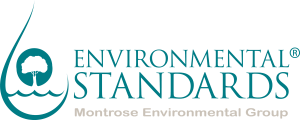

The Deciding Factors: Essential Questions and Insights for Navigating Emerging Contaminants in Environmental Projects
The Deciding Factors: Essential Questions and Insights for Navigating Emerging Contaminants in Environmental Projects
In today’s rapidly evolving environmental landscape, organizations grappling with contaminants of emerging concern—commonly referred to as emerging contaminants—face a myriad of challenges related to public health and ecological integrity. From escalating regulatory pressures to growing consumer concerns, the stakes have never been higher. These challenges underscore the critical importance of addressing contamination sources while navigating economic, social, and technological factors that influence our response strategies.
Our expert, Technical Director of Chemistry Operations Meg Michell, CEAC, who has dedicated over 30 years to pioneering innovative projects in this field, offers a unique perspective on overcoming these hurdles.
Meg recently sat down with colleague Dwight Hoster, Quality Assurance Chemist, to be interviewed and share her expert perspective and insights on navigating the evolving landscape of emerging contaminants. In this interview, she draws on her extensive experience to discuss methodologies and actionable strategies to tackle emerging contaminants effectively and sustainably.
What are some of the first questions you have learned to ask during project startup regarding emerging contaminants?
Emerging contaminants are those that have been detected in the environment but are not yet regulated or fully understood in terms of their potential risks to human health or ecosystems. While very little is known about some emerging contaminants, there may be significant amounts of information available for others.
Depending on the current stage that the emerging contaminant is in, some questions to address are:
- Which emerging contaminants are of concern?
- Are we targeting specific classes (e.g., PFAS [per-and polyfluoroalkyl substances], pharmaceuticals, microplastics)?
- Are we considering newly identified or poorly understood chemicals?
- Is there prior data suggesting which contaminants may be present, and at what concentrations?
- What is the source of the potential contamination (e.g., municipal wastewater, industrial effluent, agriculture, landfill leachate, and/or stormwater)?
- What is the purpose of the analysis (e.g., initial exploration, assess environmental risk, drinking water safety, investigating contamination from a specific site/source)?
- What environmental media need to be sampled (e.g., surface water, groundwater, drinking water, soil, sediment, biota, leachate)?
- Are there any current regulatory or health benchmarks available (guidelines, action levels, or reference doses from agencies like US EPA [United States Environmental Protection Agency], WHO [World Health Organization], or local authorities)? If not, do we have any information to help predict a potential level of concern?
- What are the anticipated concentrations in the media to be sampled (e.g., parts-per-billion or parts-per-trillion)?
Based on the information gathered from these questions, we then need to ask additional questions to determine what sampling and analytical techniques/methods are available and/or appropriate for the project.
- How stable are the analytes in the media to be collected? Is there any known transformation or degradation that may occur?
- Are there potential sources of external contamination that may come from the field or laboratory procedures?
- Are validated methods (e.g., US EPA, ASTM) or other guidance available?
- What are the limits of detection and quantification that are needed? Do we need ultra-sensitive detection methods?
- Is the goal to determine presence or absence, or to obtain quantitative values?
- Do we anticipate needing specialty instrumentation or techniques that may not be available at many commercial environmental laboratories?
- Could a non-targeted analysis be useful?
- What is the budget and timeline?
- What quality assurance/quality control (QA/QC) procedures and criteria are needed to meet the data quality objectives for the project?
With constant method updates and changes, what have been the biggest hurdles to maintaining consistency throughout a project?
When analytical methods or techniques are changed, it’s important to assess the potential impact on analyte detection or quantitation—especially if data comparability is critical for decision-making. Ideally, split samples should be analyzed using both the existing and new methods to directly compare results and support this assessment. Based on the outcome, a determination can be made about whether the change is acceptable, or if it is necessary—and feasible—for the laboratory to maintain the historical method for certain applications.
One of the greatest challenges lies in the fact that laboratory procedures evolve very rapidly. Because of this, there is often little opportunity to anticipate or plan for the changes. While these updates may improve analytical performance over time, they can also compromise data comparability, potentially affecting the ability to make informed decisions at a site. This is particularly problematic when tracking historical trends, as it’s not possible to go back and recollect samples for direct comparison.
There are many different types of projects (litigation, historical trending, etc.) that have differing requirements. Do you go into each project with a consistent mindset and approach? Or do you address each project with a “blank slate” mentality and treat each as its own entity? What are some consistencies that you know can be used interchangeably between projects?
Generally, I approach each project based on its specific context and the decisions that need support. While every project—whether it involves litigation, historical trend analysis, or another focus—has unique aspects, I usually start by asking a core set of foundational questions to ensure I understand the main objectives, data requirements, and potential constraints. These initial questions provide a consistent starting point, but the approach quickly becomes tailored to the project’s goals.
While I draw on lessons learned from past experiences, I aim to stay open to new information and evolving best practices. Listening carefully to the client’s needs is crucial, but it’s just as important to anticipate possible issues they might not have considered. Balancing consistency, adaptability, and proactive thinking helps ensure each project is approached thoughtfully and effectively.
When methodological changes occur that can influence the historical trends of a long-running project (for example, adding linear/branch isomer quantitation in PFAS methods), do you think the project should be considered new at the point of change? Do you believe the integrity of those trends might be compromised? How might these changes impact the project’s progress and goals? Do you think they will need to be reassessed and adapted accordingly? What are the best ways to incorporate these changes?
Do I think the project should be considered “new” at that point? Not necessarily. Procedural changes in analyte quantification can significantly influence historical data trends. Whether a project is considered “new” depends on its nature, goals, and the level of continuity needed for decision-making.
The core objectives of the project—whether it’s risk assessment, remediation, or long-term monitoring—often stay the same. However, the interpretation of data moving forward must account for the method shift, and in some cases, it may warrant treating post-change data as a separate phase within the project timeline.
Will the integrity of trends be compromised? There is definitely potential for the integrity of historical trend data to be impacted. A change in method can lead to higher or lower results, not because of actual environmental changes, but due to improved extraction efficiency, sensitivity, or expanded analyte scope. This has been true in PFAS work; adding branched isomers to quantitation has significantly altered reported concentrations.
Transparency is key to preserving trend integrity. It’s important to clearly document any procedural changes, their timing, and how they affect comparability with historical data. In some cases, reanalyzing archived samples with the new method (if available) can help bridge the gap.
Will project goals need to be reassessed? They might need re-evaluation and potential adjustments. If decisions depend on concentration trends, stakeholders may need to reframe how those trends are interpreted after the method change. Conversely, if the project’s goals are more qualitative or site-behavior-based, the impacts could be minimal.
What’s the best way to integrate these changes?
- Proactively communicate upcoming or recent method changes to all stakeholders.
- Document modifications in technical memos or data quality reports.
- Flag data before and after the method change in datasets and visualizations.
- Consider side-by-side comparisons (e.g., split samples analyzed with both methods).
- Use footnotes or qualifiers in trend charts to prevent misinterpretation.
- Engage with decision-makers early to re-align expectations if data shifts are anticipated.
Ultimately, the goal is to preserve data integrity and transparency so that meaningful decisions can still be made—even as methods evolve. The key is to incorporate these changes thoughtfully and collaboratively to keep the project scientifically sound and practically useful.
For PFAS analysis, we have seen the regulation of analytes at levels that are difficult for laboratories and current methodologies to meet. Has this been a consistent trend with other emerging contaminants throughout the year? If not, why do you think this shift is occuring?
Emerging contaminants are sometimes newly identified or recently detected due to improved analytical methods. Additionally, analytes that are not naturally occurring—particularly man-made, persistent chemicals—often require extremely low detection limits. Since there is no natural “background” level for these substances, any detected amount may indicate contamination and could pose a potential health risk. Many emerging contaminants fall into this category, as they often originate from sources such as industrial activities, consumer products, or pharmaceuticals.
Advances in analytical instrumentation have significantly improved detection capabilities over time, enabling detection at increasingly lower levels. However, this increased sensitivity can also introduce new challenges. At ultra-trace levels, it becomes difficult to distinguish true environmental concentrations from external contamination sources, including consumer products commonly found in laboratory or field environments. For instance, certain analytes like PFAS are widely used and can be present in everyday items—even in legacy equipment or materials used by Field Teams and laboratories—making it difficult to entirely eliminate background interference.
What is one consideration you think every consultant should incorporate into project development?
How will data be used to support decision-making—both now and in the future—and what level of consistency and defensibility will be required to do so?
Understanding the decision context at the outset can shape everything: the sampling design, analytical methods, data quality objectives, and how to handle changes over time. Projects often evolve, and methodologies may advance—but if the consultant hasn’t built in a plan for data comparability, traceability, and adaptability, those changes can compromise the long-term value of the dataset.
Beginning with a clear understanding of the data’s end use, consultants can proactively design the project to balance innovation with continuity, meet stakeholder expectations, and guarantee confidence in the results throughout the life of the project.
With decades of experience and a commitment to staying at the forefront of emerging contaminant developments, our team is prepared to offer customized consultation, practical solutions, and support. Contact us to see how we can assist with your projects.


